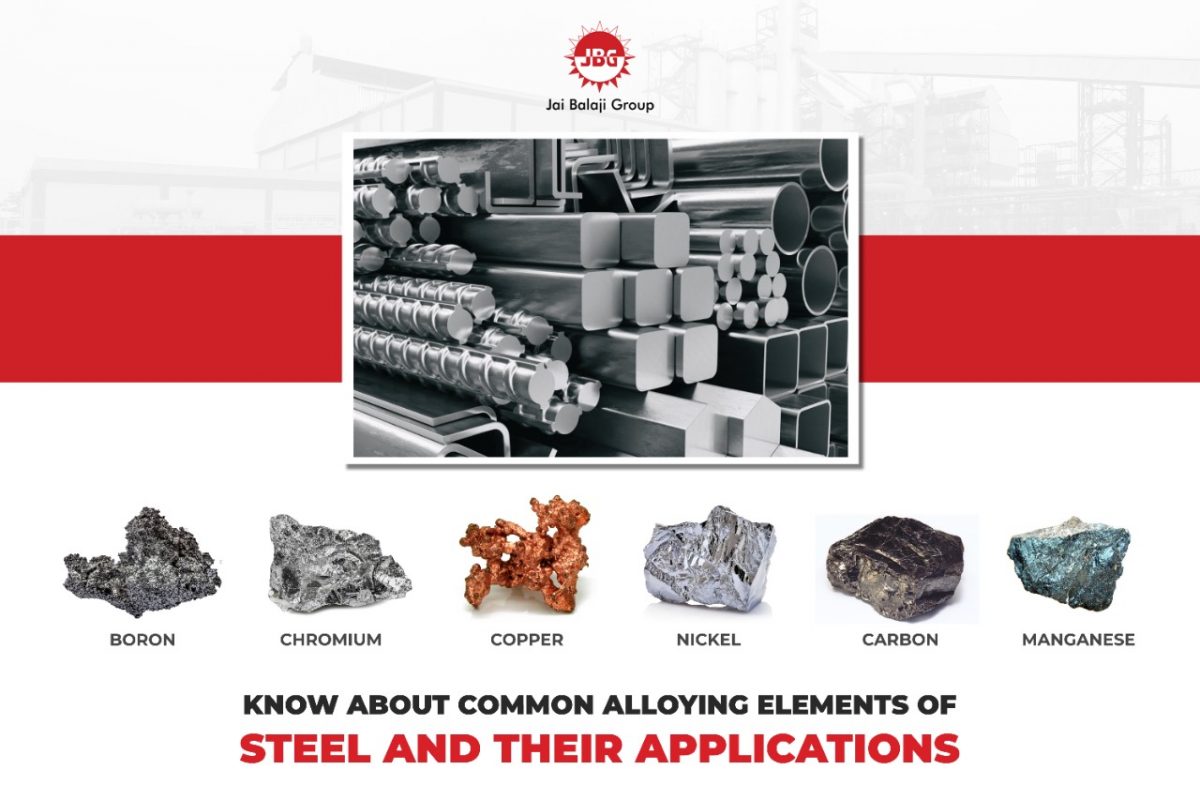Alloying elements and materials are added to Steel to change the physical and chemical effects of the product already there. These changes are done with the alloys to fill many wanted uses. Different elements when added to Steel in different amounts and at different temperatures and other mechanical conditions can result in different alloys. A tested and understood environment and the process are maintained for the wanted chemical and physical effects.

Some of the common alloying elements of steel and their uses are as follows-
Boron:
Very small quantities of the element Boron are added to low-carbon steels during manufacturing to increase the strength, resistance to abrasion, and hardenability of the metal. Boron is added to some steel for the nuclear industry for its high neutron absorption capability.
Chromium:
When more than 10% of Chromium is added to the molten Steel during its making, it reacts with the Steel to form an oxide layer that will make sure it turns out to be corrosion resistant. Chromium is also used to increase the hardness and tensile strength of the steel product. The most common application of this alloy is seen in Stainless Steel utensils, medical equipment that needs corrosion resistance, etc.
Copper:
Copper is added to hot steel in slightly larger quantities than the other elements in the list to get better physical and chemical effects out of them. Steel developed with the copper alloys finds its own uses in building bridges, laboratory and office buildings, multi-story car parks, and deep-sea oil rigs.
Nickel:
In high amounts, Nickel has a big impact on the strength of the alloys and also makes its resistance to corrosion and oxidation better. In small amounts, this element increases the toughness of Steel. Nickel-alloyed Steel is majorly used in combination with Copper to form highly corrosion-resistant Stainless Steel products.
Carbon:
It is the most important material included in steel. It makes the tensile strength, hardness, and resistance to wear and tear better. It lowers ductility and toughness.
Manganese:
A deoxidizer that reacts with sulfur to make forge ability better. It increases tensile strength, hardness, and resistance to wear & tear. It decreases the need to scale or get distorted. It increases the rate of carbon penetration in carburizing.
By proper definition, steel is a mixture of iron and carbon. Steel is alloyed with different alloying elements to make the physical effects better and to make more special effects such as resistance to corrosion or heat. Proper mixing of such alloying elements at the right temperature, with the right environment, is very important and care is to be taken to make sure that the official rules and steps are properly followed.



